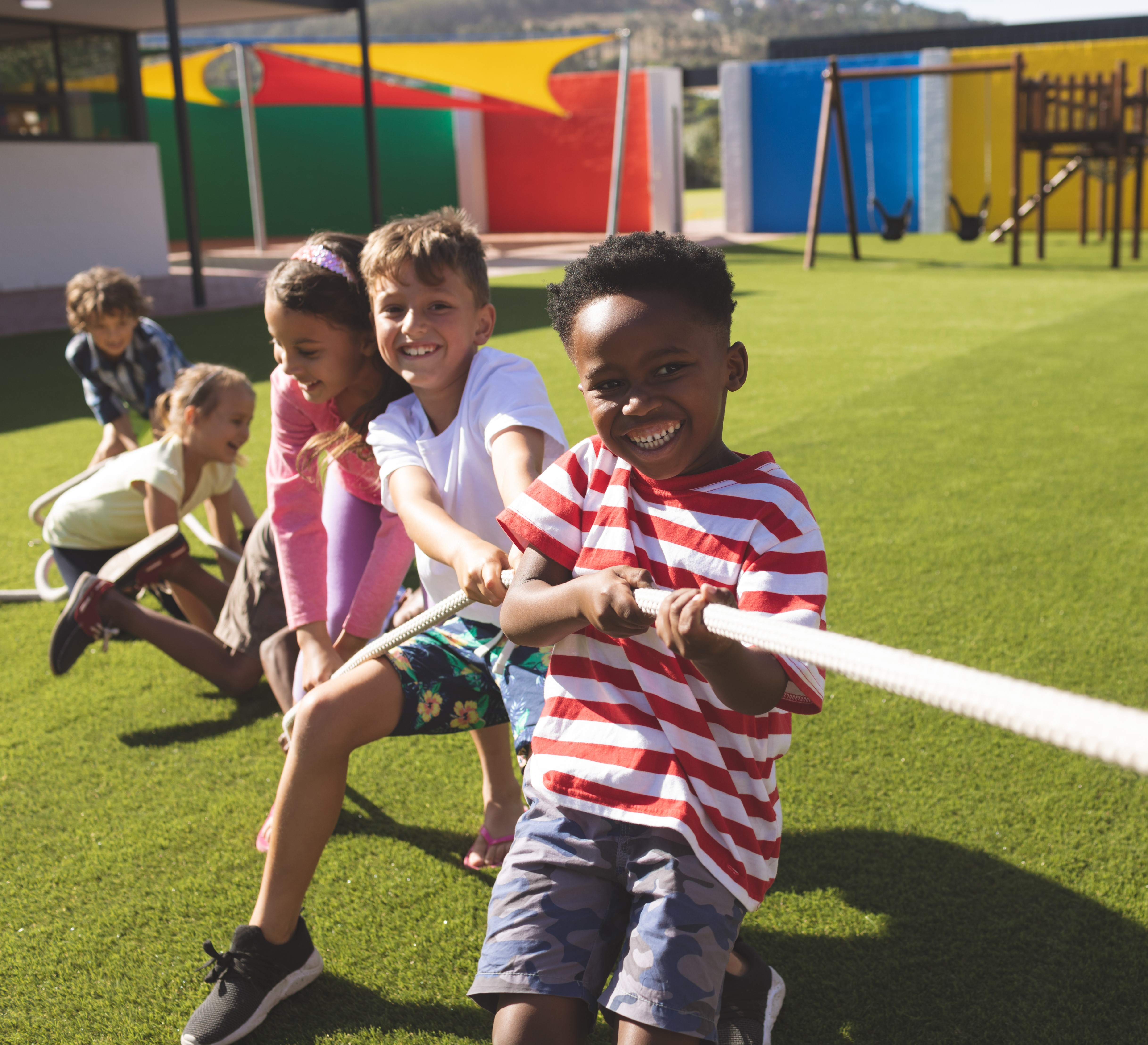
OUR BEST INTENTIONS ARE NOT WORKING—RECESS IS ESSENTIAL FOR HEALTH AND LEARNING
Tracy Vaillancourt and Lauren McNamara | December 11, 2020
Tracy Vaillancourt, Ph.D., Professor and Tier 1 Canada Research Chair in School-Based Mental Health and Violence Prevention, Faculty of Education, University of Ottawa; Chair of the Royal Society of Canada’s Working Group on Children and Schools.
Lauren McNamara, Ph.D., Research Scientist, Diversity Institute at Ryerson University; Ashoka Fellow and member of the Royal Society of Canada’s Working Group on Children and Schools.
If you pass by most elementary schools during recess, things look very different. Children are in sections and their play seems more organized. And of course, many are wearing masks. But at least they are outside, reaping the benefits of this important school time.
If you pass by most high schools during recess (i.e., breaks), things also look very different. But in this case, what you see is no activity because students are not typically outside for breaks, even when the weather is good. This is a problem.
We asked a number of high school students about what has changed about breaks during COVID and they told us the same concerning story. Maddy told us she doesn’t “even get a lunch break at school.” Mitch said he has two 10-minute breaks for his cohort “to step out into the parking lot and take off our masks,” and according to Ellie, “we aren’t even allowed to leave the class during lunch.” Jaden told us that he spends his two 10-minute breaks on his phone because none of his friends are in his cohort. Zoe has lunch in the cafeteria with “specific seating.” Evan misses playing basketball at lunch with his friends. Makayla remarked that “all of the fun of school has been removed now that it’s so controlled,” a statement strongly agreed upon by Abby, Cassie, and Tia. Sadly, Dylan now “hates school.”
And Tom said, “They’ve stripped the life out of school. They get us in and then get us out as fast as they can.”
Central among their complaints is the lack of time, space, and support to connect with their friends. This is what gives ‘life’ to a school. And the science supports it.
School-based relationships provide a sense of connection and belonging that makes school meaningful and engaging, allows students to feel focused and content, and enables them to thrive as human beings. Indeed, learning happens in relationships and relationships are forged when students have an opportunity to connect with their peers during the school day, most often outside of instructional time. These connections happen in the hallways, outside on the field, during lunch, on the playground, and in other informal spaces, with important implications for health and learning.
We need to protect and support these spaces as students need them. Currently, extra-curricular sports have been drastically reduced, if not cancelled completely, and for many teens, there are no formal breaks. These spaces give them a necessary break, a recess from focused instruction and learning, a time and space to connect and burn off pent-up energy. That is, the non-instructional parts of the school day are the glue that gives school ‘life.’
Students are telling us, repeatedly, that our best intended measures are not working, and are in fact, causing them harm. As Maddy aptly stated, “Sadly the point of the systems put in place was supposed to help us during the difficult times of COVID, but I find it just made things worse and has put me under more pressure than ever.”
While we can appreciate the need to protect students and our communities from physical harm during this unprecedented time, we wonder at what expense?
So what can we do?
First, know the science. The benefits of recess are well-documented. The last 20 years have seen a considerable body of research linking recess to the overlapping components of physical and mental health. Recess provides an opportunity for students to learn and refine how to negotiate with peers, to cooperate with others, to solve problems, and to regulate their emotions. These skills are not trivial. They are factors that are consistently linked to better academic achievement and overall well-being.
Moreover, recess gets students out of their chairs – promoting movement, which is fundamental to the formation of new neurons (neurogenesis) and new blood vessels (angiogenesis) needed for cognitive functioning like attention and learning and hence academic achievement. The more physical options students have, the better, as physical activity is associated with resilience, positive mental health, well-being, and reduced anxiety.
Second, we need to figure out how to bring recess back for high school students. Parents of teens might be horrified to learn that high school students have four minutes between classes and thirty minutes for lunch. And this is pre-COVID. Now, high school students typically do not transition between classes nor have a formal lunch break.
The school boards need support from the province. The schools need support from their administrators. The teachers need support from their principals. And the unions need to be involved in all negotiations. And during COVID, however long this nightmare lasts, all of us need to find a way to ensure schools retain their ‘life’ while still keeping students and communities safe.
If the pandemic is to have a silver lining, it is that it has highlighted the need to prioritize time and space for human connection at school. With this in mind, we worry that this lack of prioritization may also have another unintended consequence. Teens who seek to meet their need to belong may do so outside of the school setting, without the safeguards in place, especially during the upcoming holiday break, thus thwarting public health efforts to keep them safe.



